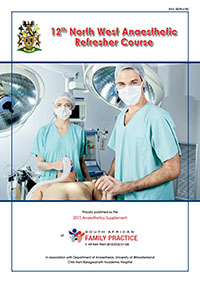Anaesthetic Concerns of Laparoscopic Surgery
Keywords:
anaesthetic concerns, laparoscopic surgery
Abstract
Laparoscopic surgery is one of the key diagnostic and therapeutic tools in the current surgical era.1 It is a principle technique for minimally invasive surgery, and has been used in procedures ranging across various surgical subspecialities.2 Recent technological advances have enabled major progress and extension of the technique from gynaecologic surgery to major general surgical procedures. The greatest clinical advantages are probably in the area of abdominal general surgery, which is the main focus of this article.3 Since the first laparoscopic cholecystectomy performed in the late 1980's, the technique has developed as the treatment of choice for patients with gallstone disease. It has also been applied to various thoracic, upper and lower abdominal procedures including fundoplication, vagotomy, hemicolectomy, herniorrhaphy, nephrectomy, pelvic lymph node dissection, bariatric surgery, hysterectomy and oesophagectomy, to name a few.4
Section
Refresher Course
By submitting manuscripts to SAFP, authors of original articles are assigning copyright to the South African Academy of Family Physicians. Copyright of review articles are assigned to the Publisher, Medpharm Publications (Pty) Ltd, unless otherwise specified. Authors may use their own work after publication without written permission, provided they acknowledge the original source. Individuals and academic institutions may freely copy and distribute articles published in SAFP for educational and research purposes without obtaining permission.

